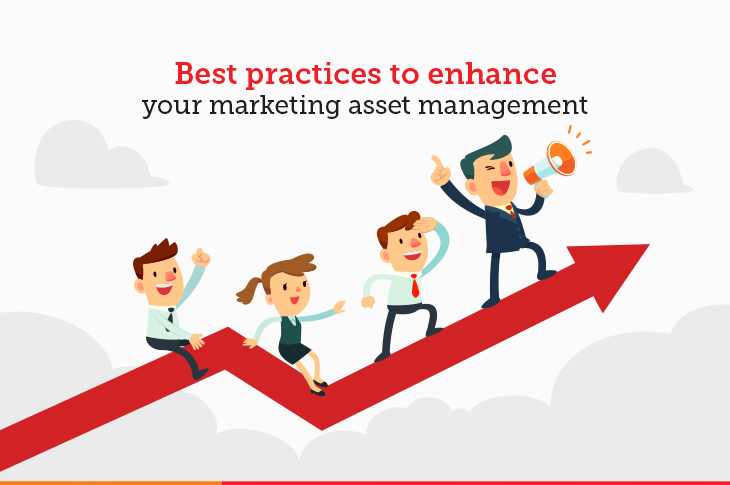Best practices to enhance your marketing asset management

What is marketing asset management?
As the name conveys, marketing asset management is the practice of organizing marketing collaterals such as drafts, presentations, logos, style guides, and reports in a central repository, in an easily accessible and distributable fashion.
Why do you need marketing asset management in content marketing?
As a content marketer, you must be all too familiar with the chaos that is invariably a part of putting together a piece of content. And no, we do not mean the actual writing and editing part; that pales in comparison with what goes on before and after it. Picture this; you have been given a customer case study to write. You have had a call with the customer, the recording or transcript of which is in a folder on your computer. You open the folder, only to find a slew of recordings named rec1, rec2, rec3, and so on. You spend quite a bit of time skipping through the recordings until you find the right one. Before you start writing, you decide to consult the case study guidelines and the design template to help you structure the content. You do not have access to either of them, so you ping the respective owners and wait for them to email the items to you. Finally, after you are in possession of all the requisite material, you sit down to write and whip up a draft. Next comes the design part. You again spend time sifting through folders to find the customer logo to share with the designer. Then comes the frantic search for social media banner templates, of which there are a hundred and in no particular order. Same with the customer headshot for the testimonial. Same with the video testimonial that you got edited from the videographer.
In summary, writing content might take you a day, but the task of searching for and selecting elements to go along with it adds another day to it. This is why you need marketing asset management – saving you from wasting time on locating assets and waiting to get access to them.
Benefits of marketing asset management
- Improved productivity – no more search and wait times
- Better collaboration – sharing assets become a lot easier
- Lower redundancy – knowing all the assets in your repository saves you from recreating something that’s already there
- Greater autonomy – a central repository reduces dependency on other teams to share content
- Higher consistency – since style guides and templates are out in the open, content becomes standardized
Best practices for marketing asset management
Make assets findable at a glance
Group assets based on their type (such as presentations, videos, word documents, etc.) and make them easily recognizable by displaying icons against each type. Furthermore, make sure images come with a thumbnail to simplify singling one out from a plethora of images.
Standardize file names
Make sure you name the files in a way that is easy for you and others to find them. Setting an org-wide naming standard that includes date and version will avoid confusion in searching for and locating assets. Some marketing asset management solutions also use AI to automatically give files appropriate names and also display attributes and tags.
Track and archive versions
Be sure to correctly name the versions that you want to refer to or revert. Again, including the data or the version number when naming them would prevent slip-ups and ensure you share or publish the latest versions.
Have a search bar
Have a feature where collaborators can search for assets by name. You could also make it possible for them to type in a keyword and have all the relevant assets display as a list.
Define share settings and access permissions
Create access groups, define roles, and broker privileges to ensure secure access to sensitive files and folders. Receive alerts and notifications for changes made to files that you own or control.
Digital asset management (DAM) – the future of marketing asset management
Digital asset management solutions allow you to follow all the above best practices. DAMs support a wide array of file formats, allow bulk uploads, help categorize and search assets with filters, provide usage reports, and have many more benefits apart from the basic functionality. They also integrate with other commonly used content tools (such as Adobe Acrobat and Photoshop) to provide holistic asset management. There is no shortage of DAM solutions in the market (Google Drive and DropBox being the most popular ones), but for content marketing, you need to pick a solution that is in tune with your unique requirements. Scatter Box is a DAM solution built for marketers by marketers. With AI-powered image recognition for smarter search, auto-tagging of files, detailed filters, and a bunch of other awesome features, Scatter Box is your go-to DAM for seamless, intuitive marketing
Relevant Articles:
1. https://blog.scaleflex.com/do-all-business-owners-need-digital-asset-management-software/
2. https://scatter.co.in/digital-assets-need-more-than-a-cloud-drive-heres-why/
Contributors: Aastha Singh, Sanchea D’ Souza, and Swapnil Adsul
